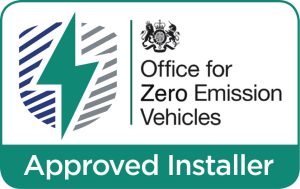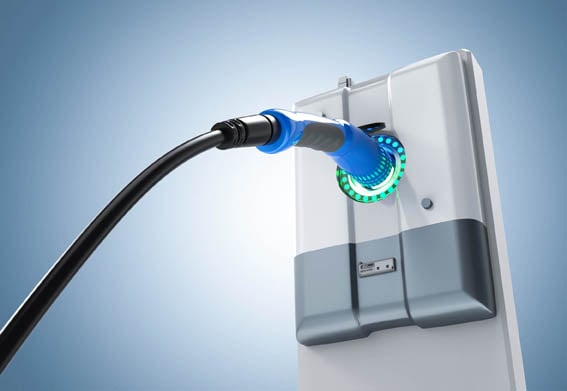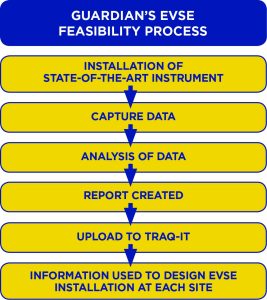Feasibility Study
Discover the Gateway to Savings with Guardian's Feasibility Study
Our comprehensive analysis delves into phase balancing, harmonic distortion, power factor optimization, installation consumption, capacity assessment, and most importantly, identifying cost-saving opportunities for you.
Let’s start talking about maximizing your bottom line.

Drive into the Future with Substantial Cost Savings
What are the benefits of conducting a feasibility study?
Within each study, the transformer and main switch rating are reviewed which means the spare capacity can be added to the report with ease. Undertaking a feasibility study is a crucial step in the early stages of planning and evaluating the viability of a proposed electrical vehicle installation project. The primary purpose of a feasibility study is to assess whether the project is feasible and economically viable before committing significant resources. Here are some key reasons why undertaking an EVSE feasibility study is important:
-
Knowledge of your spare capacity – A feasibility study will show actual spare capacity so any future installations can be designed correctly, as per BS7671 regulations.
-
Accurate measurement of power consumption - A feasibility study will measure your actual maximum demand and show an accurate value. Installations may have a calculated value from the original installation design but as installations change and additional loads are added, this can become an inaccurate figure.
-
Cost Saving Recommendations – A feasibility study can identify issues leading to excess power consumption to help reduce energy demand and save money over time.
-
Troubleshooting – Studies can identify problems in a system such as abnormal power consumption or harmonic distortion which can be used to diagnose and correct issues.
-
Easy Access to measurement data – Guardian reports will include all measured parameters in an easy-to-use Excel data sheet, so filters and search functions can be utilised.
-
Visual representation of results - Guardian reports will include graphs to show any project requirement parameters. This could include total active power consumed against total apparent power for example. The graph shows times and dates so a detailed analysis can take place regarding peak times of consumption.
-
Executive summary - The report will include a summary that highlights all project parameters in a single location for quick reference and enable discussions with non-technical stakeholders.
-
Social and Environmental - Compliant with ISO14001 and ISO 50001, a feasibility study can help you manage and control your power quality and consumption.
-
UK Net Zero target - Industry can help the UK work towards Net Zero by improving their power quality and therefore reducing waste.
Decision-Making
A well-conducted feasibility study provides decision-makers with comprehensive information to make informed choices about whether to proceed with the project, modify the plan, or abandon the idea altogether.
Undertaking an EVSE feasibility study is a proactive and systematic approach to assessing the practicality and viability of an electrical vehicle project, helping your organisation make well-informed decisions and avoid unnecessary risks and potentially identifying cost savings across your business.
Guidance on the design of EVSE electrical installations is given in IET Wiring Regulations Eighteenth Edition BS 7671:2018. Chapter 31 (maximum demand), Appendix 17 (energy efficiency).
Use our contact form below to speak to one of our technical experts.
Is there any additional guidance available?
Guidance on the design of EVSE electrical installations is given in IET Wiring Regulations Eighteenth Edition BS 7671:2018. Chapter 31 provides detail regarding a designer needed to know the maximum demand of an electrical installation. Part 7, special locations, includes Section 722 that covers the extra requirement for EVSE installations and finally, appendix 17 discusses energy efficiency of an electrical installation.
Use our contact form below to speak to one of our technical experts.

Have you had a bank of charging points installed but there's not enough power ?
Over the past several years, Guardian has encountered a number of EVSE issues among clients. In summary, companies are installing EV charging points unregulated and at will, only for end users of the equipment to discover that they don’t perform to expectations. This results in the EV not being adequately charged or not being charged at all. In many situations, EVSE installations are not being designed and installed to British standard regulations, therefore putting dutyholders in a potentially vulnerable position.
Guardian's EVSE Feasibility Process

